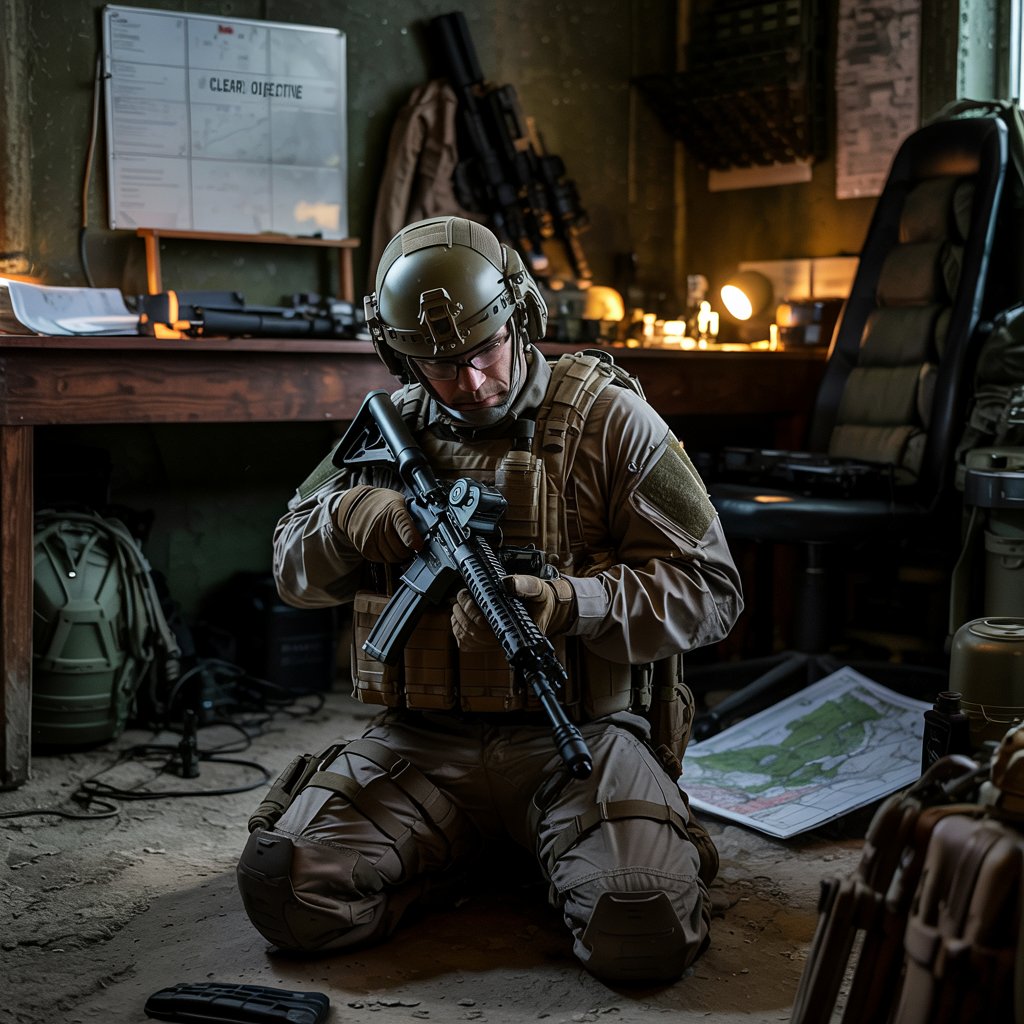Introduction
In elite military units like Delta Force, Navy SEALs, and British SAS, every operator has a specialized role that contributes to mission success. These roles are not job titles—highly trained, life-or-death missions that require precision, flexibility, and teamwork.
Whether a hostage rescue, direct action raid, or reconnaissance operation, knowledge of these roles can assist in explaining how special operations forces (SOF) can function so effectively.
In this 3,000-word guide, we’ll break down the 6 most common operational roles in elite units, including:
Team Leader
Breacher
Sniper / Designated Marksman
Medic
Communications Specialist
Point Man / Lead Assaulter
We’ll also include real-world anecdotes from veterans, training insights, and an FAQ section to answer key questions.
1. Team Leader – The Mission Commander
Responsibilities
Makes critical decisions under extreme pressure.
Coordinates with higher command (JSOC, CIA, etc.).
Ensures mission execution according to plan.
Key Skills
Tactical awareness – Must be able to read the battlefield in real time.
Leadership under stress – Operators must trust their judgment.
Adaptability – Plans tend to change mid-mission.
Real-World Example
A veteran Delta operator recounted a night raid where the team leader had to call an audible when the layout of the target building did not match intelligence. Instead of a frontal assault, they switched to a stealth entry, avoiding an ambush.
2. Breacher – The Door Kicker
Responsibilities
Forces the entry with explosives, battering ram, or cutting tools.
Clears obstacles (locks, barricades, IEDs).
Coordinates closely with assaulters to maintain momentum.
Key Skills
Explosives knowledge – Aware of how much charge to use without risking hostages.
Speed & accuracy – Every second counts in a dynamic entry.
Staying calm under fire – Typically the first to get enemy contact.
“In training, we’d breach hundreds of doors—wood, metal, reinforced. The difference between a clean entry and a botched one could be milliseconds.”
3. Sniper / Designated Marksman – The Long-Range Guardian
Responsibilities
Eliminates high-value targets from a concealed position.
Provides overwatch for assault teams.
Gathers intelligence through observation.
Key Skills
Patience & discipline – May wait days for one shot.
Ballistics mastery – Wind, distance, humidity all affect accuracy.
Stealth movement – Must remain undetected.
Famous Example
In Operation Gothic Serpent (Black Hawk Down), Delta snipers Gary Gordon and Randy Shughart inserted to rescue a downed pilot, knowing they’d most likely be killed—both were posthumously awarded the Medal of Honor.
4. Medic – The Lifesaver
Roles
Cures gunshot wounds, burns, broken bones in combat.
Carries specialized medical gear (tourniquets, chest seals, IVs).
Trains fellow soldiers in rudimentary trauma treatment (in case the medic is hit).
Critical Skills
Combat trauma skills – Far beyond civilian EMT training.
Ability to work in the midst of flying bullets – “Medicine in the suck.”
Rapid decision-making – Who can be saved.
War Story

Afghanistan, a SEAL medic stitched together three life-threatening gunshot wounds in complete darkness, using only a red headlamp to hide his position.
5. Communications Specialist – The Link to Command
Responsibilities
Pops encrypted comms with HQ and support units.
coordinates drone feeds, satellite intelligence, and radio jamming.
coordinates live feeds to the team.
Key Skills
Technologically savvy – Operates advanced comms gear.
Level-headed under stress – When comms go down, so does the mission.
Multilingual ability – Works regularly with overseas allies.
Real-World Challenge
In Syria, a Delta comms specialist hacked a signal relay when jamming disabled their radios and used a seized enemy phone to request an airstrike.
6. Point Man / Lead Assaulter – The First in the Kill Zone
Responsibilities
Commands team’s advance in urban or jungle environments.
Identifies traps, ambushes, and IEDs.
Initiates first contact—typically wins the fight.
Key Skills
Situational awareness – Sees dangers before they occur.
Lightning reflexes – Shoots first in an ambush.
Navigation mastery – Must advance rapidly without getting lost.
Veteran Quote
“The point man takes the lead. If he winks, everybody winks. If he runs too fast, he walks into an ambush. It’s a delicate balance of aggressiveness and caution.”
FAQs on Special Operations Roles
Q1: Can one operator perform multiple roles?
A: Yes. Elite units train operators to perform essential roles if needed. A sniper can be medic; a breacher can be point.
Q2: How are assignments made in Delta Force?
A: Based on skill assessments, experience, and mission needs. New operators typically start out in support positions prior to becoming assault or sniper operators.
Q3: What’s the most dangerous job?
A: Breacher and point man—they’re usually the first to get shot.
Q4: Do women operators fill these jobs?
A: In some SOF units, yes. Even Delta and SEALs remain all-male, though other special operations forces (e.g., CIA SAD, British SAS) have featured women in combat roles.
Q5: Training in a given role takes how long?
A: Months to years. Snipers train 12-18 months before they’re deployed. Medics learn advanced trauma classes besides regular military training.
Q6: What is the position with the highest rate of attrition in selection?
A: Breachers and assaulters—they require peak physicality and psychological resilience under extreme stress.
Conclusion
Each position in an elite military unit is a highly crafted element of a larger whole. From the strategic decision-making of the team leader to the breacher’s dynamic precision, each operator’s expertise ensures mission success.
Understanding these roles gives us a glimpse into how special operations units work—and why they’re the world’s best at what they do.